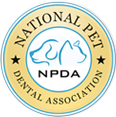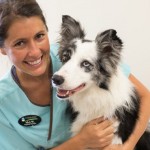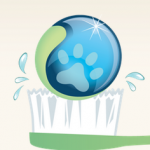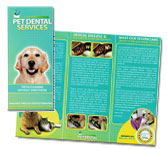“The services provided by Pet Dental Services have proven to be invaluable to our practice. Our clients appreciate the safety and convenience that non-anesthetic dentistry provides to their pets. Pet Dental Service’s staff is incredibly kind and patient with the pets in their care. Even some of our fearful patients are able to benefit from a full dental cleaning due to the gentle care provided by the PDS staff.”
The Importance of Dental Radiographs
When you take your pet in for his or her annual dental cleaning, your veterinarian or veterinary dental specialist may make a recommendation to take radiographs, or x-rays, of all your pet’s teeth based on the initial oral examination.
Many animal patients referred for a routine teeth cleaning procedure have additional oral problems, and full-mouth radiographs allow your veterinarian to view the internal anatomy of the teeth, the teeth roots, and the bone that surrounds the roots. Additionally, the initial x-rays provide a base line for future comparison as your animal ages.
These intra-oral radiographs are taken while your pet is under anesthesia because animal patients do not know how to cooperate when small radiographic films or digital sensors are placed in their mouths. The films must be placed at specific angles against the teeth with the mouth both open and closed to get the best diagnostic shots, and an animal’s instinct is to chew and swallow anything it feels on its tongue. However, the dental x-ray procedure is very quick and painless and can generally be accomplished in less than 10 minutes when performed by a trained technician.
Dental radiographs help your veterinarian evaluate the health of your pet’s teeth by identifying the following problems not seen by the naked eye:
- Tooth fractures
- Retained deciduous teeth (baby teeth that failed to erupt at the proper time)
- Tooth root abscesses or infections
- Areas where teeth appear to be missing (broken roots or parts of teeth may be hidden under the gumline)
- Impacted teeth (teeth that are wedged in and can’t erupt normally)
- Feline Resorptive Lesions (painful holes or erosions on the surface of the teeth found mainly in cats)
- Bone or soft tissue tumors
- Height of the bone below the gum line
- Bone changes and degree of bone loss due to periodontal disease or some other cause
- Size of the periodontal ligament space
- Presence, or disappearance, of the “lamina dura,” the bone bundle attached to the periodontal ligament
These last four diagnostic statistics help your veterinarian determine the degree of possible periodontal disease, predict future tooth and bone loss, and allow for a full treatment protocol to be recommended for you pet.

 Dr. Melissa Byers
Lake Forest Animal Clinic
Lake Forest, CA
Dr. Melissa Byers
Lake Forest Animal Clinic
Lake Forest, CA







